If you purchase an independently reviewed item through our site, we earn an affiliate commission. Read our affiliate disclosure.
Quick Overview
Mason bees, vital pollinators in North America, face numerous threats from pests, parasites, and predators, which can be categorized into all-season and season-specific challenges. These solitary bees, which do not form colonies or produce honey, are particularly sensitive to pesticides and require careful management to protect them from various natural enemies.
All-season threats include ants, which are attracted to the bees’ larvae and cocoons, birds like woodpeckers, and larger predators such as bears. Control measures range from physical barriers to careful placement of bee houses. Parasitic insects like the Houdini Fly and various wasps, including the monodontomerus and chrysura, pose significant risks, often infiltrating nests to lay eggs that will consume the bee larvae.
Season-specific threats include pollen mites and fungal infections like chalkbrood disease in the fall, as well as carpet beetles, meal moths, and various beetles in the summer. Preventative measures include regular nest inspections, avoiding reuse of nesting materials, and maintaining cleanliness to prevent infestations. Beekeepers play a crucial role in safeguarding mason bees by employing non-toxic control methods, regular cleaning, and providing quality bee houses to reduce the impact of these threats.
About Mason Bees
Common mason bee pests, parasites, and predators can broadly be categorized into two types: all-season (year-round) and season-specific pests, parasites, and predators. In this article we’ll give an overview of each of these pests, parasites, and predators, and how can you protect your mason bees against them.
For more information on mason bee pests, parasites and predators, be sure to check out Crown Bees, a highly reputed company specializing in mason and wild bees in the United States.
It is thought that within North America, about 5,000 native bee species are in existence. These occupy mostly cavities or tunnels that are above the ground. The popular mason bee, belonging to the Osmia species, is capable of setting up its nest almost anywhere, but preferably above ground. These may include hollow plants, abandoned rodent holes, cavities in man-made structures, or even beetle holes found in wood.
The mason bee is also referred to as the orchard mason bee or the blue orchard bee. Its generic name is Osmia lignaria and has two sub species referred to as Osmia lignaria propingua and Osmia lignaria lignaria. The mason bee is widely domesticated nowadays thanks to its pollination services. Not only that, there has been an increased effort to conserve the bee given its declining population. The over 500 species of Osmia globally, are continuously threatened by human activities as well as natural enemies.
Mason bee houses have made it possible for bee lovers to rear the mason bee within their farms and backyards, enabling both to mutually benefit from each other. These insects are referred to as solitary bees since a single female will occupy its own nest. The mason bee is also unique in all aspects – they have no colony, do not produce honey, and are non-aggressive even though they have stingers. However, they can defend themselves if they do feel threatened.
All Season Mason Bee Pests, Parasite, and Predators
Mason bees are highly sensitive and require little management when compared to the honey bee. They are particularly prone to pesticides. It is therefore the responsibility of those who use pesticides in their lawn or garden, to ensure it does not drift into the mason bee houses. Flowering plants should also be free from pesticides since the bees forage on these plants. This is not the only challenge faced by the mason bee. Pests, parasites, and predators target mason bees as well. Consequently, they should be protected. This should be an all-season work on your part, leaving no chance for these enemies of the mason bee to attack.
In this category are pests, predators, and parasites that require an all-season control. They include:
1. Ants
Ants pose a serious risk of decimating an entire mason bee population. They are serious predators that attack and loot all that comes their way. An attack by ants is easy to notice since they camp for a while before searching for other victims. Some ant attack signs include: mason bees without wings or a chain of ants headed to the bee house. You can see them climbing the wall, post, or fence post where the nest is mounted.
Ants are allured by sweet pollen, nectar, mason bee larvae, and cocoons. These are nutritious to the ants, especially the developing larvae. Ants can be controlled by smearing the poles of mounting surfaces with Vaseline. You can even use a sticker product along the surface to trap the ants. It is preferable to use non-toxic control methods when dealing with ants. You should also ensure the bee house is kept off the ground to keep the ants from getting in easily.
2. Birds
Mason bees are a delicacy to some birds such as the woodpecker. They are naturally inclined to burrow through trees in search of all types of insects, and that includes the mason bees. Birds are experts when it comes to “putting their mouth where their investment goes“. They will build a nest where food is in plenty. Therefore it will not be surprising if you find a nest near your bee house. Birds will take advantage of any space available around the mason bee nesting area. In fact, small birds can even build their nest inside the nesting material.
Some of the signs of a bird attack will include broken nesting trays on the ground, a fallen bee house, or a nearby bird nest. You can control birds by placing the solitary bee house out of sight from them. Consider placing bird feeders away from the mason bee nesting area, so as to shift their attention to other areas and not the mason bee house. Any empty spaces around the nesting material should be filled with rocks or wood to avoid birds coming in to establish their homes. Finally, use a chicken wire to cover the solitary bee house. This should be at least 3 inches away from the tubes.
3. Bears
Bears are notorious eaters of both honey and mason bees. They can devour quite a number of mason bees within a few hours. Some signs of a bear attack include the nesting trays lying on the ground broken. Bears are allured by the smell of pollen and nectar. They are also attracted to developing larvae. Bears will destroy the mason bee house and consume whatever they can get.
To control bears, you need to place the solitary bee house at a height of not less than 8 feet. Nests should also be out of sight, otherwise, it will draw the attention of bears. Your backyard or farm should also be fenced to keep off these huge predators. Consider installing an electric fence around the farm or backyard.
4. Earwigs
These insects are opportunistic in nature and are usually drawn in by leftover pollen. They rarely kill the adult mason bees but will target the larvae. They will attack exposed eggs in most cases. Earwigs are easy to see when you conduct routine checks on your mason bee house. They will be seen inside the tubes or around the mason bee house crawling all over.
Earwigs are attracted to moist surfaces, thus you can use a moist newspaper to collect them. Roll it up and insert it into the bee house or put it to the side. The insects will collect on the newspaper and can then be tossed into the compost pit.
5. Rodents
These include the squirrels, mice, raccoons, and rats that invade mason bee houses. They will target the bees and the growing larvae. Rodents will chew out the tubes and you will see holes and broken materials on the ground. You might also find the rodent nesting hole on the ground near the mason bee house. They might even build their nests inside the mason bee house if space is available.
One of the ways to keep off rodents, place a wire screen with ½ inch spaces around the mason bee house. The hotel should also be properly elevated, preferably 6 feet above the ground. The mason bee house should also be removed during off-season and placed in the garage or a shed. Another option is the use of rodent traps. Consider also keeping a cat for security against rodents.
6. Houdini Fly (Cacoxenus indagator)
The second parasitic insect is the parasitic fly also referred to as Houdini Fly or the Cacoxenus indagator. They are common in Europe and belong to the fruit fly family. The tiny flies are active in springtime when the mason bees emerge. They usually inflate their heads so as to leave the mason bee mud walls. They appear as small grey flies with signature red eyes. These parasitic insects attack the mason bee larvae. The parasitic fly maggots compete for food with the larvae, that is, they eat the pollen loaf. This will starve the mason bee larvae. They will stay throughout winter and emerge as adults in spring. The adult parasitic flies will be on guard outside the nest looking out for newly built mason bee nests. They will lay their eggs therein.
You can protect the mason bees from the Houdini Fly. All mason bee nesting holes should be harvested before spring and any maggots removed and crushed. You should also continuously check the mason bee nest and crush any emerging fly.
7. Wasps
Paper or hornet wasps target mason bees. They will show up when they are least expected. These opportunistic insects can be identified easily. You will see a paper nest usually appearing as a cup that is placed upside down. The queen of the social hornet or paper wasp will look for a space within the bee house and build its nest.
Management of wasps should not include the use of chemicals or pesticides. These are harmful to mason bees as well as other beneficial insects such as the honey bee. Instead, use high-pressure water to remove the social wasp nest from the bee house. You can take out the nesting holes before spraying or use cardboard to secure the mason bee holes from the water flow. You can do this late in the evening. Once done, fill up the empty spaces with rocks, wadded paper, or twigs. This will help prevent wasps from coming back.
8. Parasitic Wasps
Monodontomerus Wasp
The first on the list of the all-season parasitic wasps that prey on mason bees is the monodontomerus wasp. They are also referred to as mono. They are about 4mm (3/16) inches in size. These can usually be seen flying in a zigzag pattern over nesting holes. You will see small holes burrowed on the sides of paper mason bee nests. This in most cases, is the hole where the adult mono wasp emerged. An empty cocoon will have a small hole in one of its sides during harvesting.
The queen mono wasp lays its eggs on the developing mason bee larvae. They are able to do this thanks to their ovipositor inserted through cracks, thin walls, weak spots, or even paper nesting. The wasp larvae will develop faster and overpower the mason bee larvae, eventually killing it. You might not even notice it since cocoons will appear healthy.
To control mono wasps, regular checks should be conducted on your mason bee house. An easy way to tell if a cocoon is infested with mono wasps is when it delays to emerge a few weeks upon release. Such a cocoon will most likely be full of mono wasps. Therefore, they should be thrown away. Filled mason bee materials should also be removed and disposed of.
You can also inspect the cocoon by holding it against bright light. The mono wasp larvae will appear as red-colored masses of tiny bodies. Actively nesting female mason bees should be given fresh nesting holes. You should also keep checking the stored tubes for any sneaky mono wasps during winter. They will appear within one or two weeks after removal of filled nests. These should be killed so as to protect the developing mason bees.
Chrysididae or Chrysura Wasp
This is a dangerous wasp that will target the mason bee house. The female chrysura will find its way into the mason bee nest and lay its egg in the mason bee egg cell. Once the egg hatches and develops into larvae, it will kill the developing bee and consume all its pollen provisions. This way, the pests will grow and fatten within the mason bee nest. It will overwinter and later emerge as adult wasps. If not controlled, these pests will pose a serious danger to your mason bee population.
You can prevent the female chrysura wasp from entering the mason bee house, through the use of tightly fitted tubes. Make sure the tubes have no crevices or cracks since these provide a leeway for the wasps to get in. If using cardboard, laminates, or paper straws, check for cracks and crevices and seal them off. You can also trap the wasps using soapy water or vegetable oil placed in a pan.
Leucospid Wasp
This is quite different from other types of wasps that invade the mason bee. You will notice that with other types of wasps, the ovipositor lies on the rear of their underside. However, with leucospid wasps, the ovipositor is situated on its back and faces upwards. It is also characterized by a tiny body and yellow-black color. It will usually move all over the Mason bee tubes and every time tap them gently with its antennae. This behavior is perceived as a way the wasp is evaluating if the mason bee inside the tube is an ideal meal for its young. If the female wasp finds it good enough, it will then drill through the cardboard tube or even rough oak tubes using its ovipositor. It will then lay its egg inside the cell of the young and growing mason bee.
Its egg will then hatch then feast on its victim, that is, the egg or developing mason bee. It will then continue feeding on the pollen and nectar provided by the adult mason bee until it becomes an adult. Once fully grown it flies away and the process continues. To control these pests, you should regularly be on the watch and kill any you see within the tubes. Consider also checking out the mason bee cocoons for parasitic larvae and have them removed and killed.
Sapygid Wasps
The last one on the list of parasitic wasps is sapygid wasps. These are ideally large in size with the female wasps growing to up to 1/3 inches long. They have a black and yellow body and are similar to social wasps, hornets, or paper wasps. Other species of sapygid wasps boast white or yellow spots. They also have a maroon band.
The sapygid wasp will look for a fresh mason bee nest and will lay its egg near the bee egg. The adapted eggs will hatch within 1 to 2 days and will immediately devour the bee egg as well as any other sapygid larvae. It will then consume the pollen loaf and spin a cocoon. They will then stay with the neighboring bees throughout winter until they emerge with the mason bee cocoons. You can protect your mason bees from this parasite by spraying it with a mist of water and then killing it. It is crucial to keep a keen eye on the mason bee house for any of these wasps flying around.
9. Humans
Human beings can never be left off any list when it comes to preying on animals/insects. Little children especially, can be an enemy to your mason bees. These insects are non-aggressive and gentle in nature, making them a target of mischievous kids. Since they do not sting, kids may play with them and end up killing the mason bees. It is therefore wise to keep the mason bee house out of reach of children.
Mason Bee Pests, Parasites, and Diseases in the Fall Season
These are the common pests, parasites, predators, and diseases in the fall season.
1. Pollen Mites
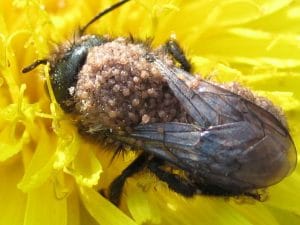
Pollen mites, also called Krombein’s hairy-footed mites. They are so tiny that you will need a magnifier in order to see them. These mites hold on to the mason bees when they venture out in search of pollen in flowers. They are common in North America and thrive best in moist regions.
These mites have a clear color. Their mass of yellow or orange feces can be seen. Pollen mites with their feces can accumulate and fill up a nesting chamber and will be slippery when touched. They consume the pollen loaf, hence starving the mason bee larvae. They will camp throughout winter. Pollen mites will be further spread to other nesting chambers in spring when healthy mason bees move into infested nests.
Your best protection will therefore be to avoid reusing nesting holes since pollen mites are easily spread by adult mason bees. You should therefore be on the lookout for pollen mites when harvesting cocoons during fall. You should also use a hard brush to remove debris and pollen mites from reusable wood trays. Harvesting mason bee cocoons is your best protection against pollen mites.
2. Chalkbrood Disease
This is not a pest or parasite but rather a fungal infection affecting mason bees during fall. It is picked by the mason bees when foraging on flowers. They can be spotted as a chalky layer that easily breaks and looks like the letter C. Their color varies from salmon, charcoal, brown, or even grey.
The chalkbrood disease poses a serious risk to mason bee larvae. The chalkbrood spores will decimate the larvae and convert them into a mass of chalkbrood spores. The infection is contagious and will spread easily among mason bees. Healthy mason bees that pass through infected nesting holes, will carry along the spores and spread them to flowers and mason bee houses. If not controlled, chalkbrood can wipe out an entire population of mason bees within 2 to 3 years.
You can control chalkbrood by harvesting mason bee cocoons in the fall. Check out infested cocoons. These should be kept from coming into contact with other cocoons and destroyed. You can also wash healthy cocoons with cold water and a little bleach solution. Use water to rinse and dry the mason bee cocoons.
Mason Bee Pests, Parasites, and Predators in the Summer Season
1. Carpet Beetles
These are parasitic in nature and threaten the mason bee population. The insect’s larvae are responsible for devastating mason bees. They are small, hairy, and look like caterpillars and they consume the mason bee cocoons. Carpet beetles can burrow through mud-capped ends and mud walls. Therefore, the best control for them is for the nesting material to be removed and stored in a garage or shed during summer. The pests should also be removed during harvesting.
2. Meal Moths
Meal moths go by so many names and can be seen as pink or white caterpillars. They are less than one inch in length and are active during mason harvest. They inhabit the nesting holes and cocoons. Meal moths burrow through mud walls or mud-capped ends and will devour mason bee cocoons.
You should remove nesting materials and place them in an upright position. You should also keep it in a garage or shed during summer under outdoor temperatures. It is also advisable to destroy the moths during harvest.
3. Ptinus Beetle
This is a popular beetle that devours food and museum items. It also targets the mason bee nest. The short and fat beetle larvae will consume pollen loaf, the larvae, and mason bee eggs. They will also eat the mason bee cocoons. The pest should be controlled during harvest. All its larvae should be removed and destroyed.
4. Flour Beetles
Female flour beetles are very harmful to the mason bee. It will lay its eggs in the mason bee nest and compete for space and food. They never harm the mason bees directly but the competition for space and resources affects the mason bee and its offspring. It will give birth to offspring that mature so fast and can overpower the mason bee colony. It is therefore important to ensure that the bee house is clean and free from flour beetles. At the end of each season, you should ensure that used tubes and reeds are removed. Check out filled tubes for any sign of the flour beetles and remove and clean them.
5. Blister Beetles
Blister beetles are a common pest in a mason bee house in summer and fall. They find their way to the mason bee house in ways you would not imagine. The female blister beetle will lay its eggs in flowers where the mason bees frequent. Once the eggs hatch, they stay within the flower until a bee comes to forage on the pollen and nectar. They will then hold onto the bee and enjoy a ride with the bee to its home. Once it arrives, it will crawl into the sealed nest cell and decimate the bee egg. It will then consume the pollen provision and overwinter in the nest. It will finally grow and mature within the nest cell. To manage the blister beetle, you will have to conduct regular checks on the mason bee house. It is important to keep the house clean and free from these beetles.
6. Checkered Flower Beetles or Trichomes Ornatus
Checkered flower beetles are popular pests that target the mason bee. Their females will search for the mason bee house and lay their eggs within the bee nest. Once the egg is hatched and developed into a larvae, it will devour the bee brood and focus on pollen provisions provided by the mason bee. If not managed, the beetle can wipe out your mason bee population. Each of the female checkered beetles will target a nest cell and lay its eggs. This will mean you will not have a future generation. To manage the checkered flower beetles try as much as possible to regularly monitor the filled mason bee tubes. If you see any sign of the beetles, remove the larvae and clean the tubes. You should also clean the tubes well at the end of each season.
7. Cuckoo Bee or Stellis Bee
The cuckoo bee is another mason bee pest and parasite that will take advantage of the excellent environment provided by the mason bee nest. It is a bit smaller than the mason bee and tends to move faster around the nest. It is also not able to transport pollen given its size and nature. The female cuckoo bee will find its way into the mason bee house and lay its egg in the nest. This will enable its young one to enjoy the free pollen delivered by the adult mason bee. The egg will hatch and kill the developing mason bee. It will then enjoy the pollen provisions until it transforms into an adult and flies away. This cycle will continue.
You can manage this pest through regular checks on the mason bee nest. Its cocoon tends to be firmer and comes with long stringier feces. As for the mason bee cocoon, the cocoon is soft and has brown straight feces. An easier way to know the difference is by familiarizing yourself with mason bee cocoons. You can then be on the lookout for anything that looks contrary to what you know. Such cocoons should be removed soonest possible.
Further Insights
In addition to regular cleaning, your best defense against mason bee pests and parasites is your knowledge of the mason bee cocoon. You should be able to easily identify any suspicious cocoon in your mason bee nest. Remember, a non-parasitized mason bee cocoon is dark grey and is usually firm when you touch it. Those with parasites will be light in color and soft or crispy when touched. Such cocoons will be heavily infested with parasitic wasps. Another way to confirm infested cocoons is by placing the cocoons on a clear surface in a dark room and then placing a shining light underneath it. Cocoons that will appear red or hollow are infested with parasites and should be disposed of.
It is also good to remember that mold is a common problem affecting mason bees. Too much moisture within the mason bee nest will provide a good condition for diseases. It is therefore important to understand the material that works well within your area. Paper straws, bamboo, or plastic straws are some of the materials used for nesting mason bees. Each of these has its advantages and disadvantages depending on the region. Find out what works best for your area and use it as housing for your mason bees.
Conclusion
Beekeepers have an important role to play when it comes to protecting the mason bee. Mason bees play an important role in pollination which contributes to the well-being of flora and fauna. These non-stinging bees have to grapple with so many challenges. We can all help to keep off pests, parasites, and predators of the mason bees. Cleaning is a measure that will work when you intend to keep parasite numbers low. A simple task such as washing the cocoons will remove pollen mites, fungal pathogens, parasitic wasps, and beetles. All these invaders tend to feed on pollen, developing mason bee larvae, and nectar. You should also buy a good quality mason bee house. This will ensure you are safe from the start.
References
- https://crownbees.com/parasites-and-diseases-of-mason-bees/
- https://ento.psu.edu/research/centers/pollinators/resources-and-outreach/disappearing-pollinators/parasatoids-and-cleptos
- https://rentmasonbees.com/predator-mono-wasp/
- https://backyardbeekeeping.iamcountryside.com/plants-pollination/raising-mason-bees/
- https://www.jstor.org/stable/2407147
- https://www.ncbi.nlm.nih.gov/pmc/articles/PMC5537383/
- https://masonbeesforsale.com/pages/bee-pests-and-solutions
What are your thoughts on this article? Leave a comment below and let us know.
 BeeKeepClub Resources and Guides for Beekeepers
BeeKeepClub Resources and Guides for Beekeepers

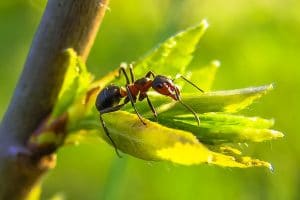

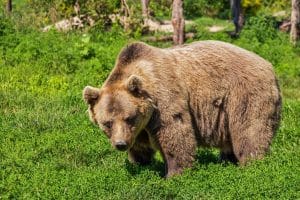

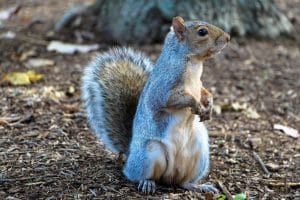

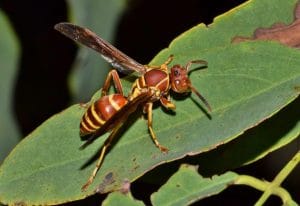



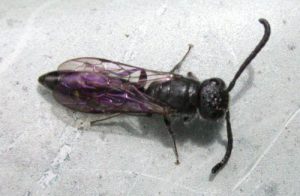
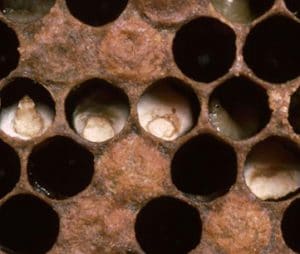

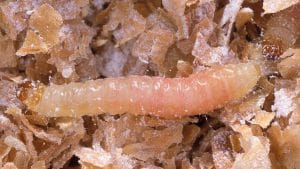

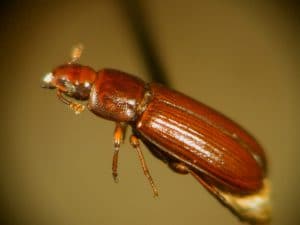
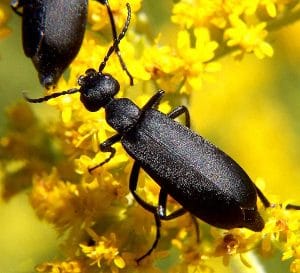
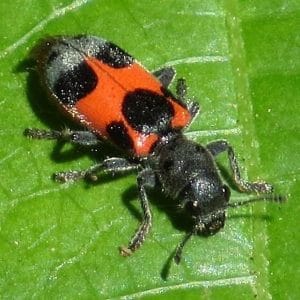
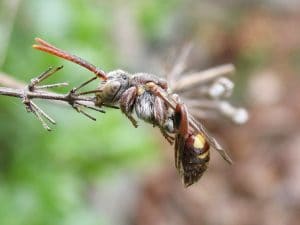
One morning I found all of the “masonry” eaten out of the 36 filled tubes. This does not seem to fit any of the suggested predators. I would think a bird or squirrel would have knocked it to the ground.
It could have been a small bird that (something around the size of a hummingbird). Their size is ideally suited to do something like that.
I’m in the UK, and new to Solitary Bees. There is a Perspex viewing layer in the hive. Eggs have been laid in the tubes in cells made by the bees. The eggs have hatched and mostly there are white larvae developing. However a few cells have changed into brown crusty areas and the larvae can’t be seen. Any ideas?
Hello, this seems like it may be the chalkbrood disease. You can read this article for more information: https://beekeepclub.com/chalkbrood-disease-treatment-for-honey-and-mason-bees/
Thank you for all the information. This is the first year I put out a Mason Bee house. I believe I mad a mistake and placed it where no mud was available. Only two reeds had a bit of mud, but no cocoons. I did have some leaf cutter bees with readily identifiable larva, and another that I have no idea what it is. I attached a picture. The dried grass was sticking out of most of the reeds. The larva is shown – small, curved, reddish.
Hi, the attached picture didn’t come through. Try using https://imgur.com/
The unidentified larva could be that of a parasitic wasp. I would recommend that you remove it.
2nd try
Ok, I’m not sure for certain. But no other larvae apart from mason bee larvae should be there, so you can get rid of it.
You can make mud & set it out for them ?
[…] Rodents. These include the squirrels, mice, raccoons and rats that invade mason bee houses. They will target the bees and the growing larvae. Rodents will chew out the tubes and you will see holes and broken materials on the ground. via […]
[…] They are small, hairy, and look liked caterpillars and they consume the mason bee cocoons. Carpet beetles can burrow through mud capped ends and mud walls. Therefore, the best control for them is for the nesting material to be removed and stored in a garage or shed during summer. via […]
[…] bees are prone to a multitude of pests and parasites. These come in what we can describe as two […]
[…] from such sellers are guaranteed to be free of pests, diseases and parasites of mason […]
Last year, my daughter bought me a bee house and a book. By the fall, I had two tubes filled and harvested the cocoons into an old prescription bottle with holes drilled in the cover for ventilation. I kept them refrigerated all winter at around 32° F. This spring, I took the bottle out and left it on my desk as I was working on my computer. Eight out of nine cocoons hatched within 15 to 20 minutes. I couldn’t believe my eyes. I released them outside and now I have 14 tubes filled and can see them working on… Read more »
Thanks for sharing your experience!
My bee house has thin grass or twigs sticking out. I saw a flying insect sith a smaller insect in it’s grasp enter a tube in the bee house.What could it be?
Hi, it could have been a wasp.